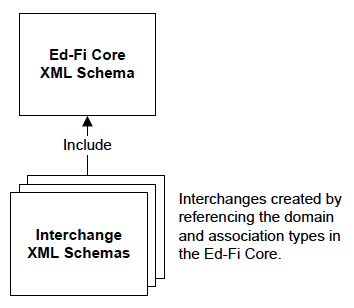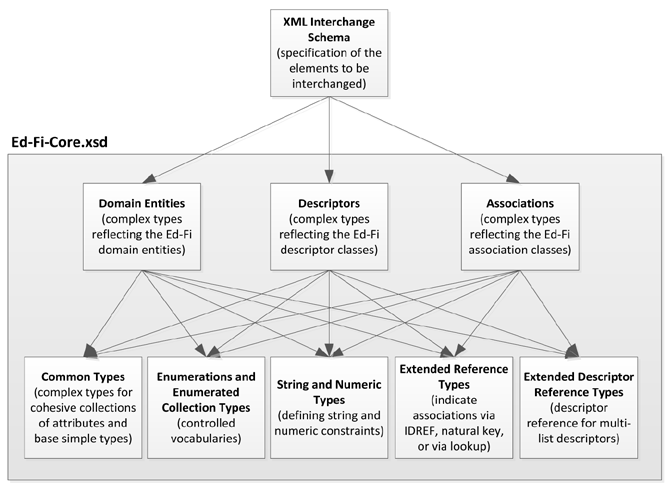Different use cases and different periodicities of data exchange require different interchange schema.
For example, the /wiki/spaces/EFDS/pages/17727544 contains a set of 21 Standard Interchange Schemas to handle common data exchange use cases, including basic student profile information, attendance records, assessment results, program participation, and many other information-transfer scenarios.
Standard Definitions and the Core XSD
The Ed-Fi data exchange specifications are XSD files, all of which primarily align with the domain entities and other types defined in the Ed-Fi Unifying Data Model. Some specialized exchanges may contain metadata or may convey data not present in the Ed-Fi UDM, but, generally speaking, most substantive information in any given data exchange will be defined by the UDM.
In keeping with that alignment to the Ed-Fi UDM, most Standard data exchange schema reference the Ed-Fi Core XML Schema — which is essentially an expression of the Ed-Fi UDM made concrete as an XSD.
Data Exchange Schema Construction
Through field-testing, the Ed-Fi data exchange schema standards provide a rigorous structure for data, but allow a reasonable degree of flexibility to account for different levels of source data availability. For example, source systems at the start of the year may have a less complete set of data than the same systems at the end of the year. Source assessment systems may have different ways of providing a means of identifying a student. The flexibility in the Ed-Fi Standard Interchange Schemas supports these realities in the field.
The Ed-Fi Standard Interchange Schemas are composed of elements from the domain and association types available in the Ed-Fi Core XML Schema, as depicted below.

High-level construction of Ed-Fi Interchange Schemas
The Ed-Fi Core XML Schema provides a library of building blocks from which to compose interchange schemas, as depicted in the figure below.


